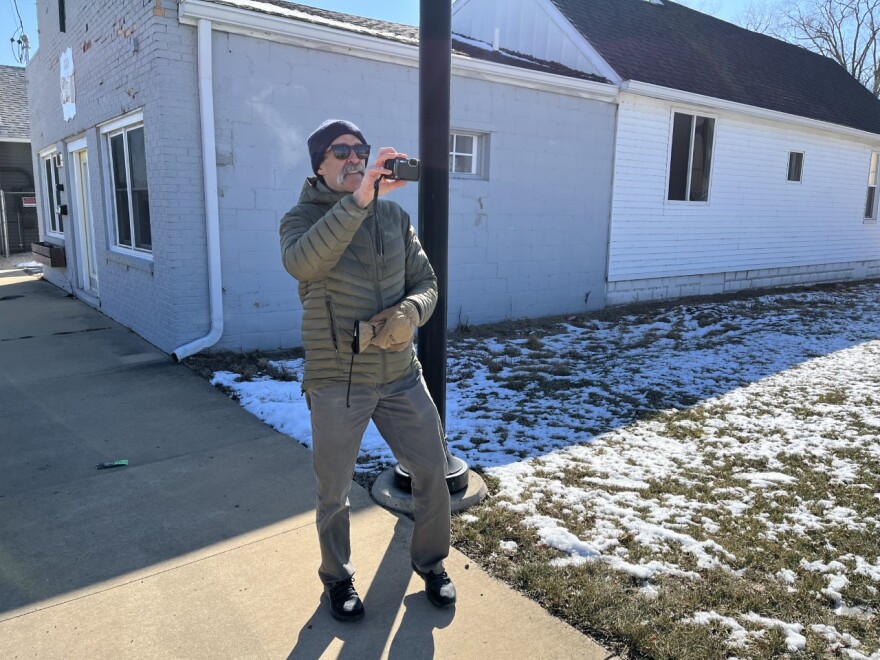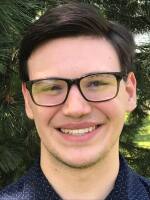Mark Fenton is a transportation, planning and public health consultant, as well as an advocate for pedestrians and bicycles. He’s taking community leaders across the country on walks around their neighborhoods to help them find places where improvements can mean happier, healthier and more mobile citizens.
"I'm in an unusual nexus, where we've realized that we have to build our communities to be healthier,” Fenton said. “And we mean healthier with regard to our personal health, but also our environmental health and our economic health.”
Fenton stresses there’s more to planning and transportation than just getting around. The layout and structure of our transportation systems creates a domino effect with far-reaching implications for health, poverty, economic development and social justice issues.
“These things depend very heavily on becoming less dependent just on driving our car everywhere, and giving more opportunity to walk, bike and take transit,” he said. “Those are really important options.”
According to Fenton, the development of American cities into an increasingly car-centric society is a process that started with World War II. Roads were widened, two-way streets became one-way and a steady flow of Americans evacuated their city residences for homes in the suburbs.
“We did a lot of things that we thought were giving us more freedom because we could drive everywhere,” Fenton said. “And we realized they were actually very restrictive. They were very problematic.”
This creates environments where kids can’t walk to school, you can’t take a bike ride to the corner store or a coffee shop and, in some cities, public transit disappeared completely. Fenton said a growing movement is looking to start undoing some of the transformation. One prominent voice in the ongoing conversation is the health community.
“The surgeon general told us way back in 1996, that everybody should try to average about 30 minutes of physical activity a day,” said Fenton. “It will reduce your risk for cardiovascular disease, type two diabetes, osteoporosis, clinical depression, dementia and a growing list of cancers.”
Fenton pointed out physically active Americans also were found to suffer less severe COVID outcomes.
“So, being physically active is pretty close to a silver bullet,” he said. “And the health community realized we had built a world over the last 70 or 80 years that made it hard to do that unless you went to a gym or consciously exercised. It's hard to get daily physical activity in those kinds of routine daily tasks.”
Besides physical activity, there’s also a social component to the long-term effects of a dependence on cars.
“When you're walking down the street, you're much more likely to say hello to somebody than when you're driving by and you're both surrounded by 3,000 pounds of steel and glass,” he said.
What Fenton calls “free-range kids,” or kids who can walk safely to and from school and social events in their communities, also are an indicator of quality transportation infrastructure.
“If you've got an environment where kids can walk to a corner store or a friend's house, then it probably means that elderly people can navigate out on foot,” he said. “That somebody who doesn't drive, somebody who has a physical disability, or simply doesn't have a car, who chooses not to drive.”
Fenton said, for him, the reality that not everyone can get around an area on foot or without a car makes the question of transportation access and design a social justice issue. The coronavirus pandemic helped put this into starker contrast for Fenton.
“We were widening sidewalks even. Sometimes with things like cones and you know, paint and tape. So we had places for people to walk safely at a safe social distance and bicycle,” Fenton said. “And because we were driving less, right, we were reallocating street space for social engagement. And there are a lot of communities that haven't gone back.”
Fenton said there’s no silver bullet solution for all of these issues, as restructuring a system with roots dating back to just after World War II is a large task. But through his walk audits, Fenton hopes to help city leaders, planners and designers see the opportunities to improve the public transportation experience.
During the audits, Fenton and the participants take a walk through a selected section of a city that demonstrates a range of what’s to offer. In his Feb. 1 walk audit with some representatives from the Greater Peoria area, they circled a part of East Peoria’s Levee district, including retail and residential areas. During and after the walk, Fenton asked questions about the experience.
“First of all, what their experience is like, is it good? Is it challenging? Where was it easy? Where was it appealing? Where was it really frightening?” he said. “And then we think about actual solutions.”
The proposed solutions can vary widely based on who attended the walk and what section of the city was chosen. They can range from increased bike infrastructure, natural foliage and reworking intersection layouts to the creation of roundabouts or bigger projects, like the addition of a bike and pedestrian lane to Peoria’s Bob Michel Bridge. But the goal for Fenton is to get people in a position to make change focused on what the experience is like right now.
“I do have people think about their own free range youth, to remind them of what that was like, because lots of people have memories of being active and moving under their own power,” Fenton said. “So we start there, but the reality is that it's already starting to happen.”
He used the example of downtown Peoria, where he said residential mixed with commercial is beginning to make a comeback. He predicts long-term, increasing residential options means the eventual conversion of Washington and Jefferson back to two-way streets.
“That's going to make those much more humane streets,” he said. “They're not going to feel like highways, which is what they feel like now. Traffic just jets for the next green light. Instead, they'll start to feel like the local streets they should be.”
Next, Fenton sees a coffee shop, a corner store, groceries, hardware, pharmacies and more following demand as residential needs increase. This creates an economically successful area and drives business development. According to him, a healthy mix of housing types is also important to rejuvenating any area.
“We want there to be a range of housing types of diverse choices so that you end up with a diverse population there across the economic spectrum,” Fenton said. “And that can happen, right, you can have row houses and townhouses and condos and apartments and single family homes, right? Those are all possible.”
However, Fenton pointed out not every solution to creating a more pedestrian and bike-friendly sitting involves millions of dollars, massive redevelopment or tax incentives — sometimes small changes make a big difference.
“The most important tool is what I would call routine accommodation,” he said. “So the city of Peoria passed a complete streets policy. That's a policy that says every time we touch the road every time we're doing anything on the roads, we think about all four users: pedestrians, bicyclists, transit and motor vehicles. One is not king, we think about them all.”
He also said Peoria recently completed an updated design guide that includes considerations for infrastructure improvements during routine maintenance like repaving or fixing a sewer line.
“Whenever we're doing any of that, we're always going to ask the question — can we make the street more complete?” Fenton said. “Can we make it work better for all four user groups? It doesn't mean paint a bike lane everywhere, it means ask the question: what's right for this corridor?”
Overall, Fenton said his conversations with Greater Peoria leaders, including organizations like the Tri-County Regional Planning Commission and the Peoria City/County Health Department, demonstrated “meaningful intent and hope” in the area.


